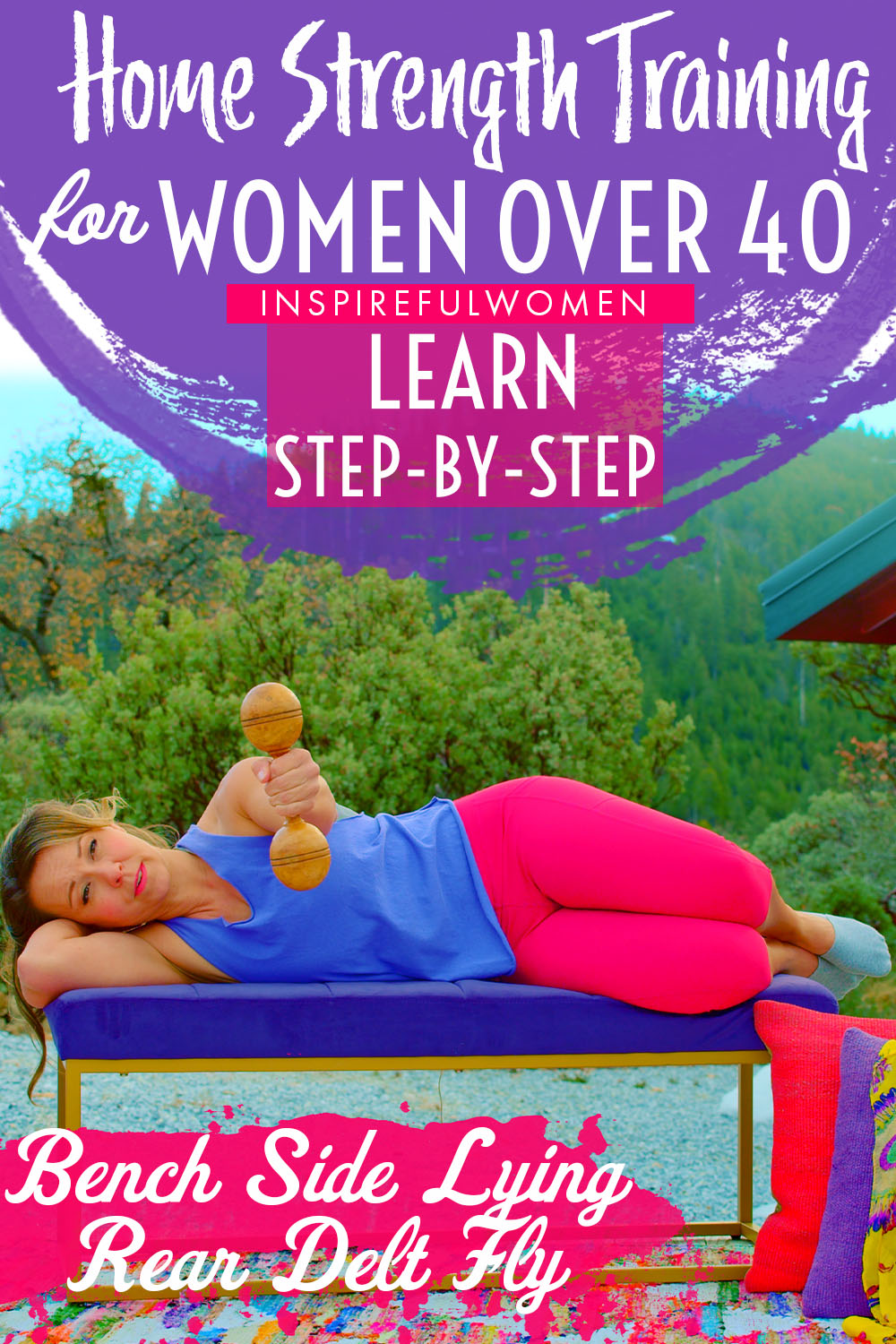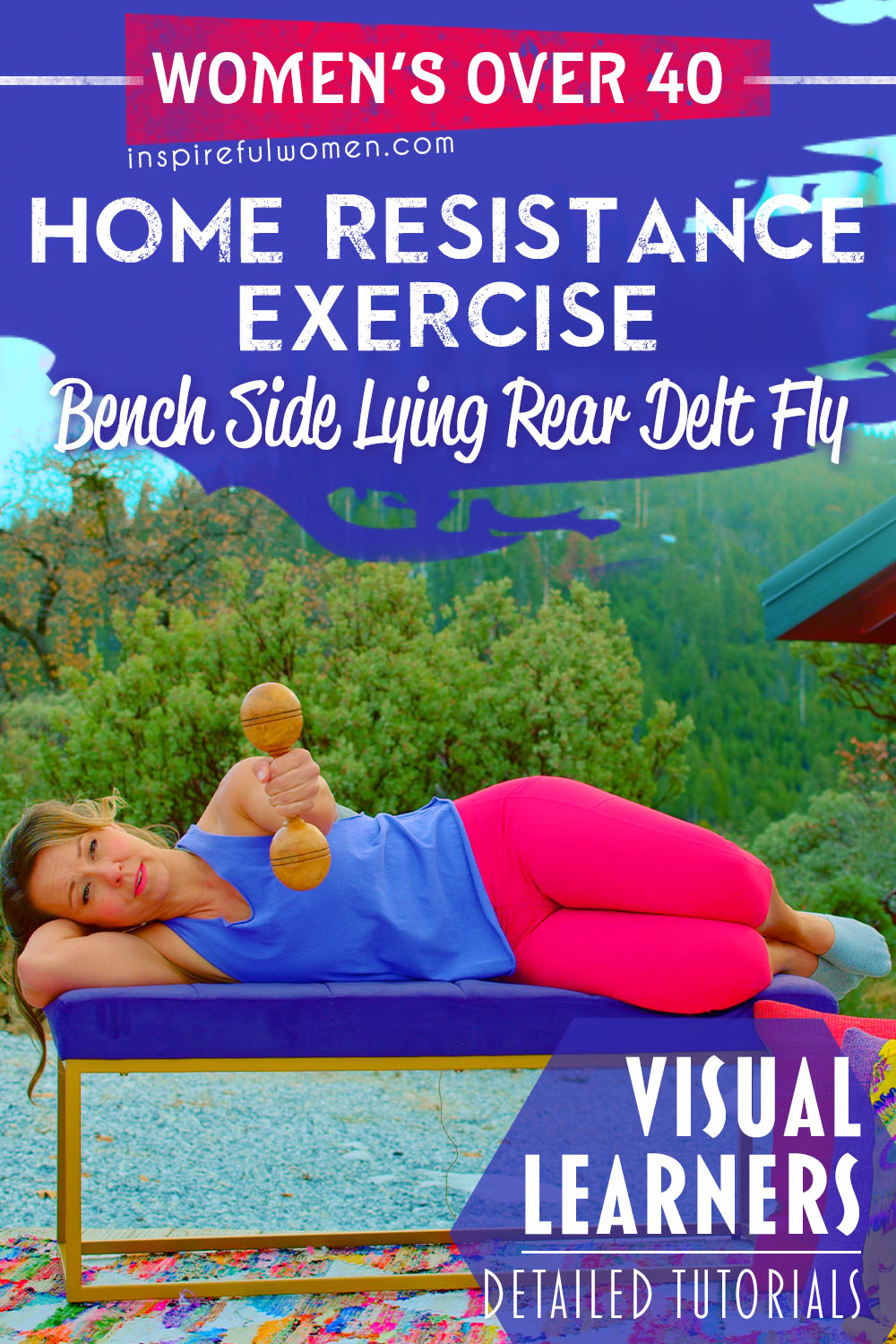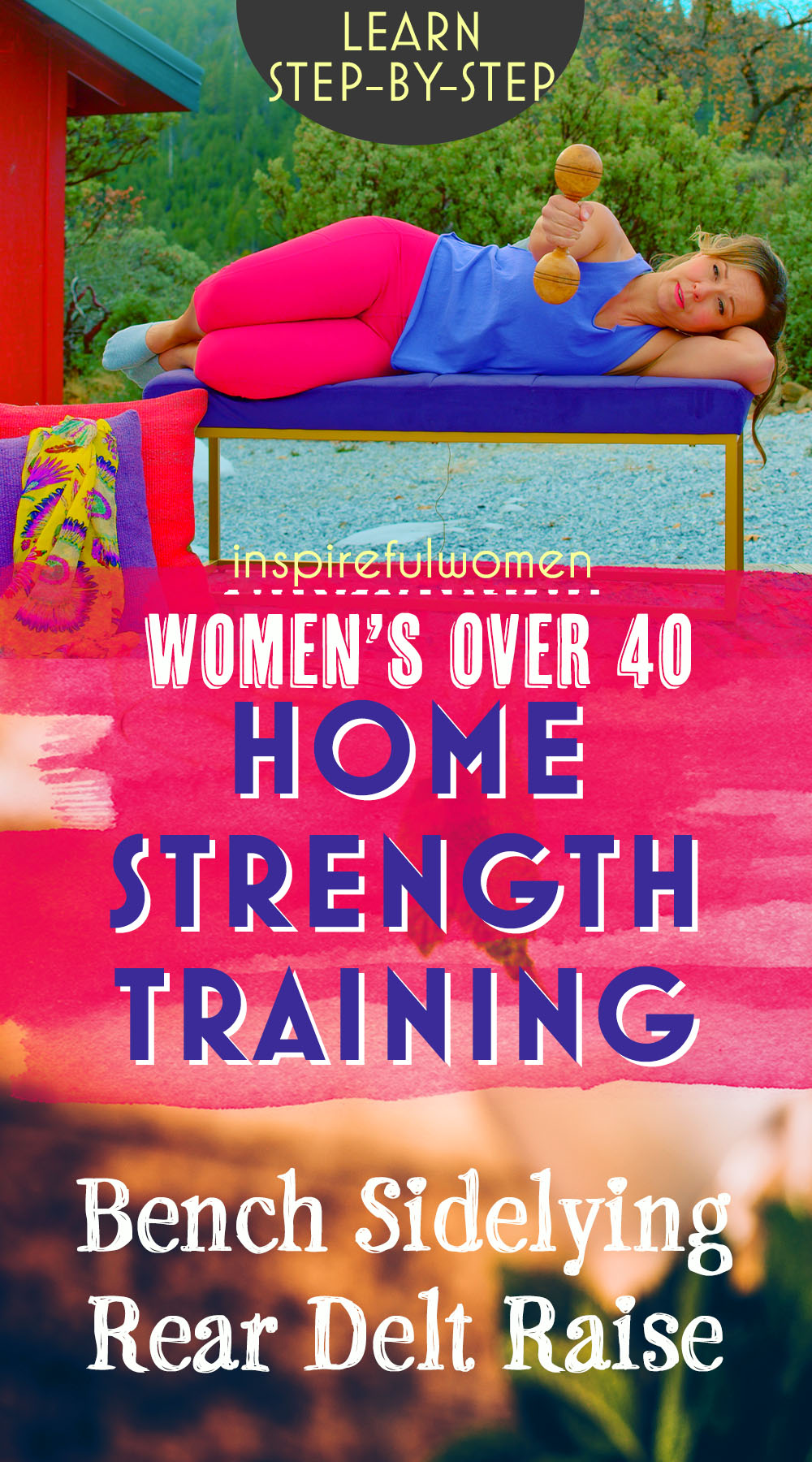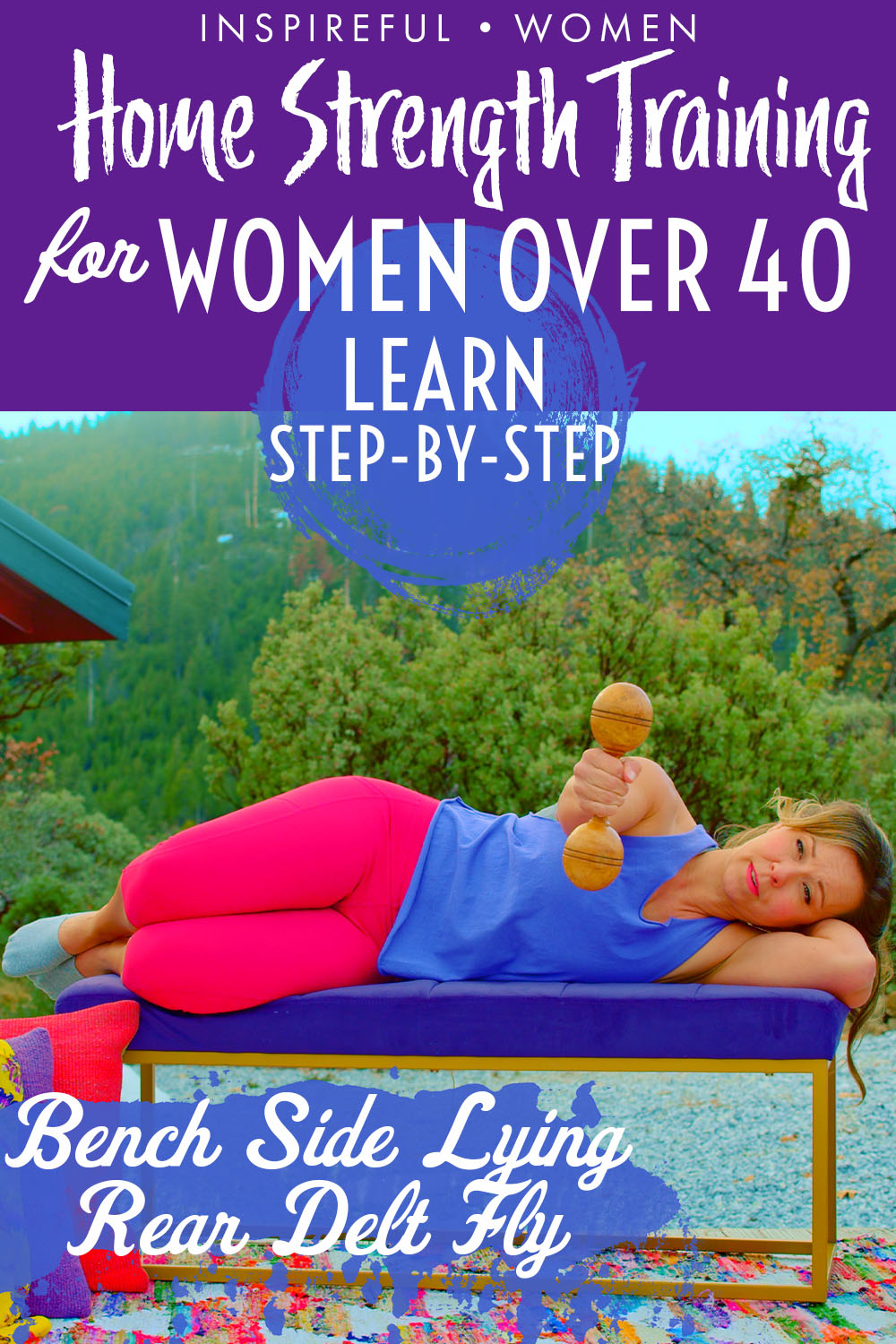Bench Side-Lying Rear Delt Fly w/ Dumbbell
How to Do the Bench Sidelying Dumbbell Rear Delt Fly | In-Depth Guide [VISUAL LEARNERS] Beginner
Proper Form | Home Strength Training
WHAT DO YOU WANT TO SEE?
QUICK DEMO
QUICK DEMO
MUSCLES THIS WORKS
MUSCLES
MAIN MUSCLES WORKED IN Bench Side-Lying Rear Delt Dumbbell Flys
REAR DELTOID
OTHER MUSCLES WORKED:
- Mid and lower trapezius
- Rhomboids
- Latissimus dorsi
- Serratus anterior
- Pectoralis
- Lateral deltoid
STARTING POINTERS
Starting Pointers
WHAT WE'RE DOING TODAY
Other names for this exercise: Sidelying Rear Delt Raise, Side-Lying Reverse Chest Fly
ALL WE'RE DOING:
While side-lying on a bench, raise your arm up parallel to the floor.
This version of the rear delt flys are done in a side-lying position and works one arm at a time. Most exercises that target the rear deltoid muscle focus on working the muscle from its mid-range to the shortened position - moving the arm back behind the torso and rotating it into the don’t shoot position. The side-lying version targets the rear deltoid muscle when it is lengthened and moving towards it’s mid-range position. The arm is “adducted” or positioned across the chest towards midline, and lifted up to parallel with the floor. The muscle is stronger in this position (compared with having the arm back towards extension) so you should be able to get more external rotation. This is a nice way to add a twist to the standard rear deltoid lifts - working the muscle through a different range of movement.
HOW TO DO THE EXERCISE
LOOKS
HOW The Bench Side-Lying Rear Delt Dumbbell Fly SHAPE OUR BODY
Toned, balanced, capped shoulders, and good posture.
PROPER FORM
PROPER FORM: Bench Side-Lying Dumbbell Rear Delt Fly
EQUIPMENT, SETS & REPS
EQUIPMENT
Bench
SUGGESTED STARTING WEIGHT FOR WOMEN:
5 lbs
SETS & REPS:
2 sets of 8 reps
PACE:
Moderate up and slower down.
BODY POSITION
BODY POSITION FOR Bench Side-Lying Rear Delt Dumbbell Flys
BODY STANCE: Lie on your side on a bench. Neutral spine, support neck with the hand of your bottom arm or folded towel.
LEGS: Bend your knees so that your legs are supported by the bench.
HAND/GRIP: Hold the dumbbell in your top hand with a neutral grip.
ARM: Top arm: straight, with your arm adducted - across your chest, so your hand is in front of the opposite shoulder. Only lower as far as you can without letting your top shoulder move forward. Bottom arm - comfortable and out of the way of the top arm.
HOW TO DO
HOW TO DO Bench Side-Lying Rear Delt Dumbbell Flys
CUE: Keep your arm straight as you lift.
Pull your shoulder blades back and down.
Lift your top arm up and rotate your arm so that your thumb points up toward the ceiling.
Only lift your arm up until it is parallel to the floor.
Lower your arm back down - rotating it back to the starting position.
Begin next rep.
HOW TO SAFELY GET OUT OF THE EXERCISE
Set the weight on the floor and push up to standing.
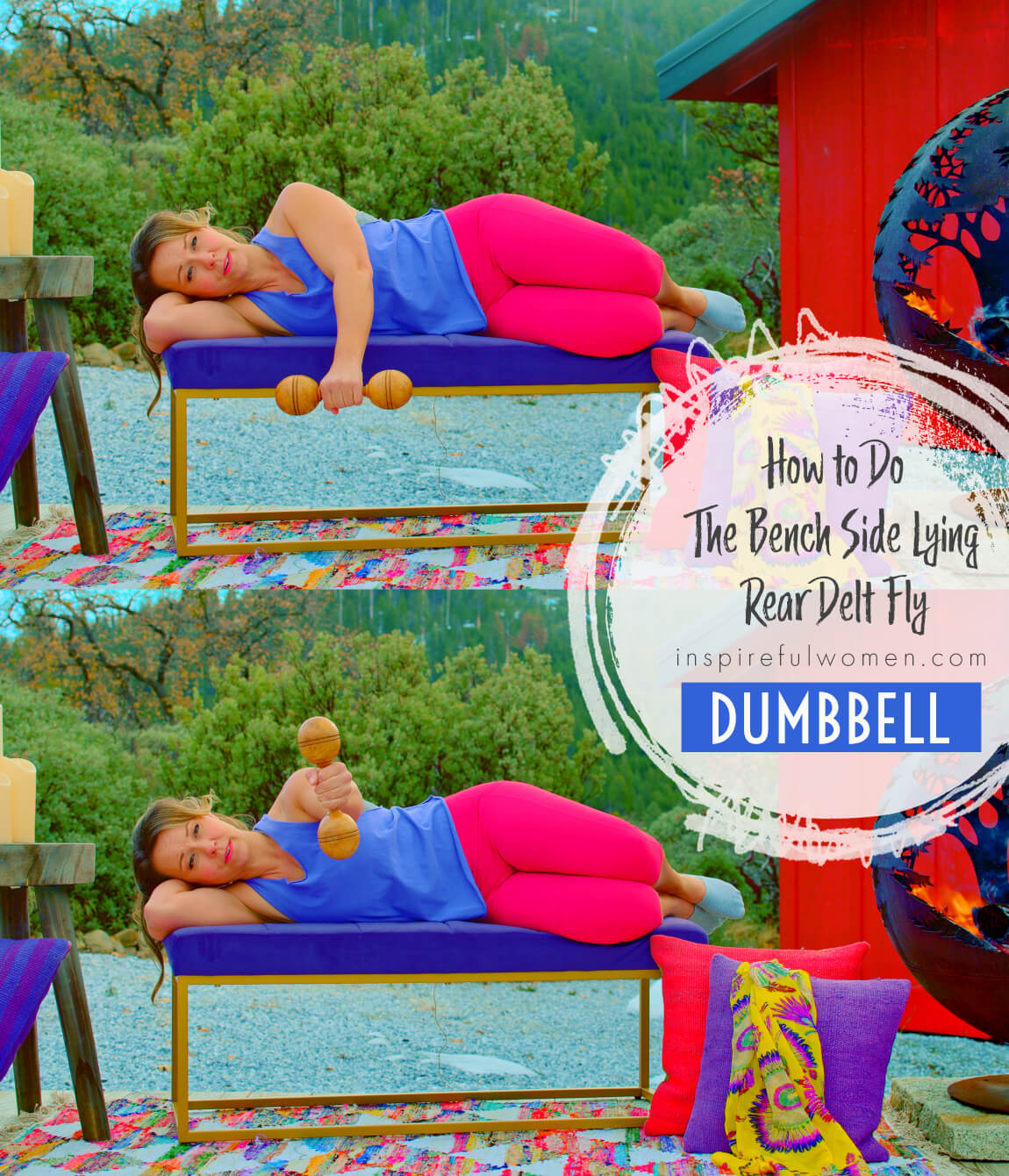
WHAT WE'RE DOING TODAY
WHAT & WHY
BENEFITS OF TRAINING THE Rear Delt
WHAT
The Rear Deltoid Fly works the muscle on the back of the shoulder. To target the rear (or posterior) part of the deltoid muscle the arm is lifted up to about the level of the shoulder and moved back, and slightly behind the torso.
Something I like about this exercise is it's one of the few exercise to work the back of our shoulder in a standing position. Why is this great? Because being bent over is a more challenging position for our body to hold! Nice to have a break once in awhile.
This exercise is a nice change from the movements that move the arm forwards or up. The backward movement of the arm works many of the muscles of the upper back, and moving the straight arm back will stretch the muscles on the front of the chest and the biceps. This feels good after sitting at a computer all day - it can be used to loosen up knots in your upper back by increasing blood flow to the area.
WHY BOTHER DOING IT?
WHY
WHY DO WE EVEN CARE?
THE BACK OF THE SHOULDER MATTERS TOO
The muscles on the back of the upper body are frequently overlooked in exercise programs. A lot of time is spent on exercises that involve lifting the arms up, pushing them forward, and pulling them down. It is important to include exercises that target the muscles of the back of the body in order to balance out the exercises that focus on the muscles in the front of the body.
Some of the most important muscles of the upper body are the muscles that attach to the shoulder blades (of which the rear or posterior delt is one). These muscles are responsible for keeping the shoulders healthy, the ability to move your arm through its full range, and hold you in upright posture. Overworking the muscles on the front of the body and underworking the muscles on the back of the body can lead to a stooped posture, upper back, neck and shoulder pain.
It is extremely rare that we only use one muscle at a time. Most movements involve many muscles working in coordination. This is especially true for movements of the arm. The main job of the shoulder is to move and position the hand. Moving the arm involves coordination between the arm and the shoulder blade. This exercise is good for targeting the muscles that control the movements of the arm and the shoulder blade and training them to work together for healthy arm movement.
EVERYDAY LIFE
EVERYDAY LIFE &
MUSCLE FUNCTION
HOW WE USE OUR rear deltoid IN EVERYDAY LIFE
1. REACHING BEHIND THE BODY
- Tending a kid in the back seat
- Reaching into the back pocket
- Bringing the arm back to throw a ball (overhand)
2. PULLING
- Pulling a car door shut
- Pulling a refrigerator door open
3. ROTATING THE UPPER ARM SO THAT THE SOFT UNDERSIDE IS FACING FORWARD AND/OR UP (EXTERNAL ROTATION)
- Reaching the back of your head for washing, brushing your hair
- Pulling a shirt off over your head
- Reaching the top of a zipper
- Scratching your upper back
- Turning your outstretched arm with the palm up (need shoulder external rotation and forearm supination)
- Receiving change in the palm of the hand
4. WORKS WITH THE ANTERIOR, AND MIDDLE FIBERS OF THE DELTOID TO STABILIZE THE SHOULDER JOINT DURING ALL ARM MOVEMENTS.
- Improves the ability to lift and carry heavy objects (the arm has a stable base to work off of).
- Injury prevention
HOW TO FEEL WHAT MUSCLE IS WORKING
How to Feel What Muscle is Working
SCIENCY STUFF
SCIENCY STUFF
SPIFFILICIOUS FACTS ABOUT MUSCLES & MOVES
The rear portion of the deltoid originates on the scapula (shoulder blade), crosses the shoulder joint at the back and attaches on the humerus (upper arm bone). The muscle moves the arm back from being in front of the body and externally rotates the arm. It is most active when the arm is lifted out to the side and away from the body (in abduction - so the arm is moving closer to horizontal abduction and extension).
ALLLL MUSCLES & WHEN
ALL MUSCLES WORKING & WHEN DURING THE Bench Side-Lying Rear Delt Dumbbell Fly
The middle and lower traps, rhomboids, and serratus anterior work to pull the shoulder blade back, in towards the spine (retraction), and down the back (depression) so that the top arm muscles have a stable base to work off of.
The rear deltoid works to horizontally abduct the arm. The triceps work to keep the arm straight.
The rear deltoids, infraspinatus, and teres minor contract concentrically to externally rotate the arm.
The arm is lowered back to the starting position through eccentric contraction of the posterior deltoid.
PIN IT FOR LATER!
